Deep autumn color palette: A comprehensive guide to your seasonal style

Key Takeaways
- As you can see, the secret to the deep autumn color palette is warm undertones, darker values and high chroma, but combined they create a rich and earthy look that works well with many skin tones and features around the world.
- If your natural hair, eye and skin color are aligned to the deep autumn color palette, then a deep autumn wardrobe will 'click' with you.
- If you've built your wardrobe around some core deep autumn colors plus warm neutrals plus some strategic accent shades — you can create outfit combinations that work across all occasions and seasons.
- Throw in metallics like gold and copper, textured fabrics and patterned pieces for extra interest and depth in your deep autumn styling without losing the warmth as a whole.
- By choosing makeup, jewelry, and accessories that complement the deep autumn palette, it enhances features and creates a chic cohesive appearance that is both inviting and striking.
- By tapping into the psychology of deep autumn colors, you can brighten your mood, boost your confidence, and make a lasting impression wherever you go—while still expressing the unique you, strong yet warm and intriguing.
Deep autumn color palette as in the rich, earthy tones of late autumn in nature. These colors tend to combine dark brown, olive green, burnt orange and deep gold.
A lot of people incorporate these colors into style guides, home décor, and on-screen design as they add warmth and depth. Warm undertones or just anyone seeking a laid-back vibe gravitate towards this palette.
So for selecting or applying a deep autumn color palette, some important advice below.
Defining the Deep Autumn Palette
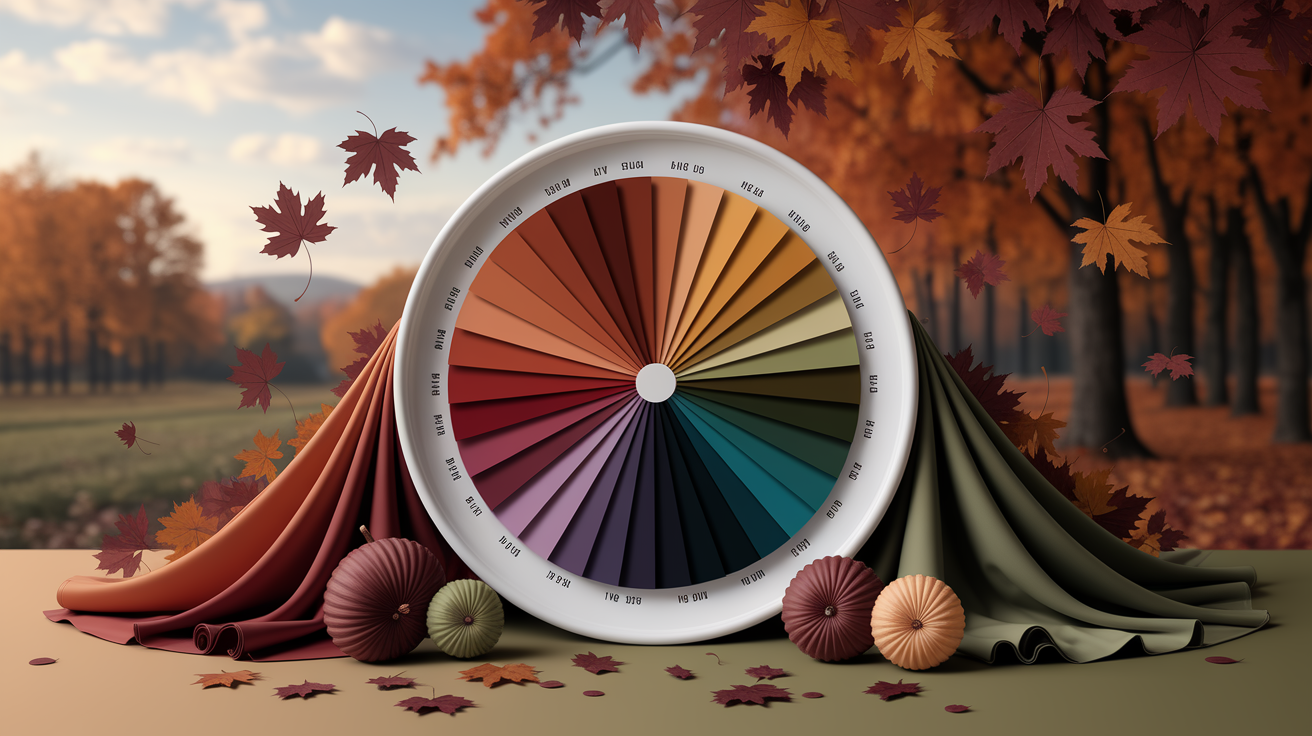
What sets deep autumn apart is the richness of its tones and a distinctive combination of warm undertones, dark values and neutral chroma. This palette is a reflection of the rooted beauty and warmth in nature as fall intensifies. Deep autumn shades are generally darker and more muted than the other autumn palettes, emphasizing colors that add depth and dimension.
Olive, camel and rust are signature colours, frequently accompanied by burgundy and chocolate hues, evoking a cozy yet refined aura.
1. The Undertone
Warm undertones characterize the deep autumn palette, illuminating the natural beauty of those lucky enough to possess them. Warm tones like mustard, sienna and rusty red play up the skin's glow. These warm hues compliment golden or peachy-toned skin, distinguishing deep autumn from the cooler palettes rooted in blue and pink undertones.
Dressing in warm tones brings a whole, harmonious look that reflects the autumn leaves changing colors. Cool undertones can throw off deep autumns, washing them out. Picking the proper undertones is key. Deep autumn palettes are meant to compliment, not fight, the natural coloring of deep autumn individuals.
2. The Value
Deep autumn colours tend to live towards the dark end of the spectrum. Colors such as deep olive, chocolate brown and cranberry bring richness and intensity to garments and accessories. These values are what create depth in a wardrobe — a dark olive jacket layered over a camel sweater brings out the warmth in both.
While deep tones dominate, blending in lighter highlights—like cream or subdued gold—keeps the overall effect from feeling overwhelming. Playing with the combinations is fun and helps you discover your own favorites that make you pop!
3. The Chroma
Rich chroma is the hallmark of deep autumn colors, infusing outfits with a vibrant, but grounded energy. Shades such as burgundy, forest green and burnt orange are bold, but not too vibrant. These tones make striking fashion statements, but still look wearable and organic.
Pairing high-chroma tones with softer neutrals, like beige or taupe, can balance a look. It's a way to keep outfits accessible while still being stylish. Deep autumn's chroma permits playfulness without sacrificing the palette's unifying quality.
4. Your Features
Deep autumn's deeper colors pair well with dark hair, from medium brown to black-brown. Eyes are usually deep brown, hazel or olive, completing the palette's intensity. Skin tends to be warm with golden undertones, which play nicely against the warm, earthy tones of the palette.
Choosing clothes in these colors helps bring out your natural features, pulling your whole look together. For instance, a rust or olive top can bring out eye color and make your skin glow.
5. The Feeling
Deep autumn colors call up warmth and comfort. Wearing these colors can lift spirits and confidence as days become cooler. The nature connection—reflected in hues like moss green or brick red—can help orient and stabilize feelings.
These colors aren't just for fashion. They can add a cozy touch to home accessories, rendering spaces warm and serene.
Your Core Colors
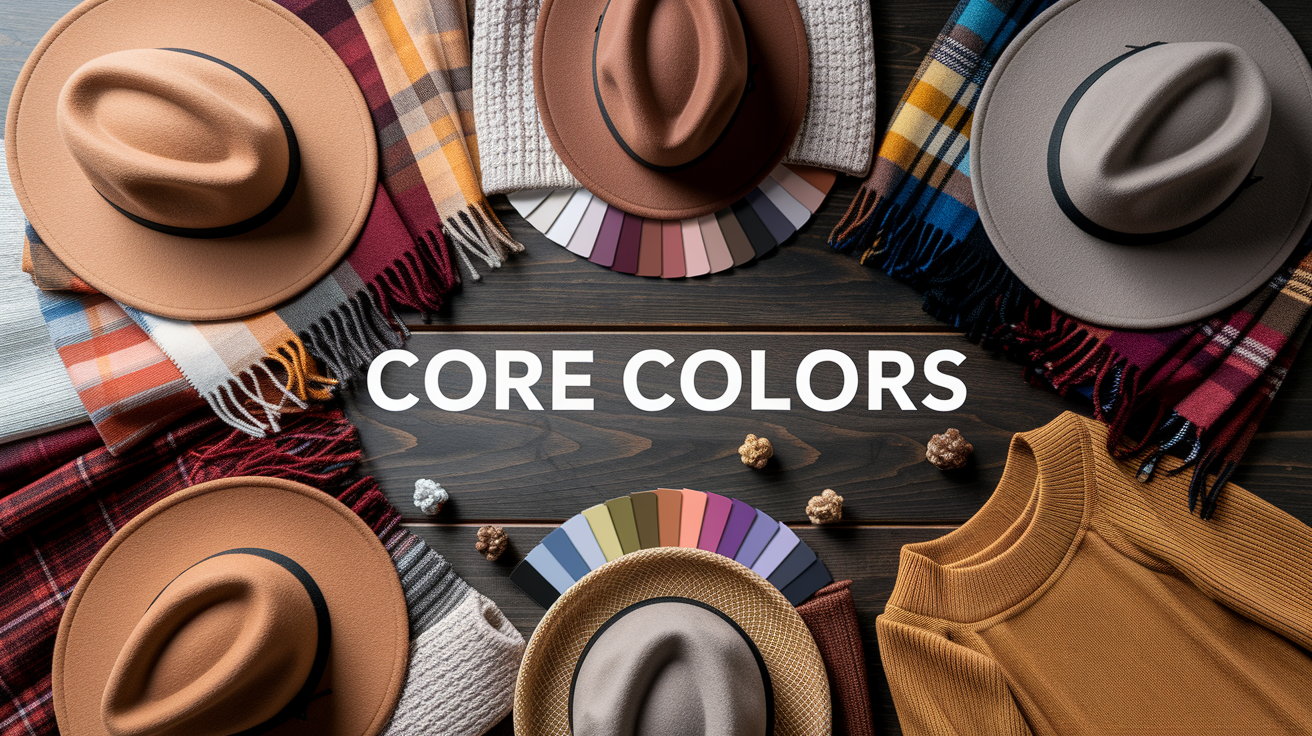
Constructing a fall color palette begins by selecting core colors. These come after examining your skin, eyes and hair. Deep autumn has dark, warm colors. Think chocolate brown, ripe aubergine, forest green, and deep mustard.
These luscious hues flatter those with neutral warm skin that tans easily and can be freckled. Hair colors may be anywhere from black-brown to deep chestnut or gold brown. Eyes are typically dark brown, black-brown, hazel, dark green or even dusty blue.
The palette emphasizes medium-to-dark values, low contrast and slightly desaturated chroma. Selecting core colors adds flexibility to combine and contrast looks effortlessly, allowing you to create multiple outfits from a small foundation.
These core colors do more than just look good—they help express your style and personality in a way that feels effortless and polished.
Neutrals
Neutrals are the foundation of any deep autumn wardrobe. Cream, camel, taupe and deep brown act as the soft base. These colors temper bold shades and make everything stick.
For deep autumns, neutrals serve to soften the look, helping outfits from coming off too hard or competition-y. Because these hues play well throughout the seasons, they provide you with more opportunities to easily mix up your look.
Throw in staples like cream blouses, chocolate trousers and camel blazers. Warm taupe or olive pants and skirts come in handy. They pair with just about any accent or statement color.
They transition between seasons and environments, from office to down time. This fluidity makes preparing so much quicker.
Accents
Accent colors give your wardrobe a zing of excitement. Deep teal, cinnamon brown and rust provide great contrast with neutrals. They assist in emphasizing facets, flaunting your attributes, and disrupting boredom.
Opting for accents that connect back to your core colors keeps things balanced. Use accents in scarves, belts or shoes for simple switches.
How about deep teal earrings or a cinnamon brown bag? These color pops are effortless to switch, imbuing new life to basic ensembles. You can even borrow some Soft Autumn or Deep Winter shades to switch things up a bit without clashing.
Map out where to use accents. For instance, a rust scarf attracts focus to your face and forest green shoes anchor an outfit. That way, accents play off of your core colors — not against them.
Metallics
Gold and copper metallics complement the warmth of deep autumn colors. They provide sparkle and appeal without hijacking attention. Go for gold earrings, copper bangles or a metallic belt for a touch of glam.
Warm metals mix with rich autumn hues, giving ensembles a more luxurious, complete feel. Metallics ought to be straightforward and mixable.
A gold necklace plays well with cream tops and chocolate sweaters alike. Copper studs can go with forest green or aubergine. Keep metallics to a couple of key pieces—say one or two per ensemble.
Beyond Your Palette
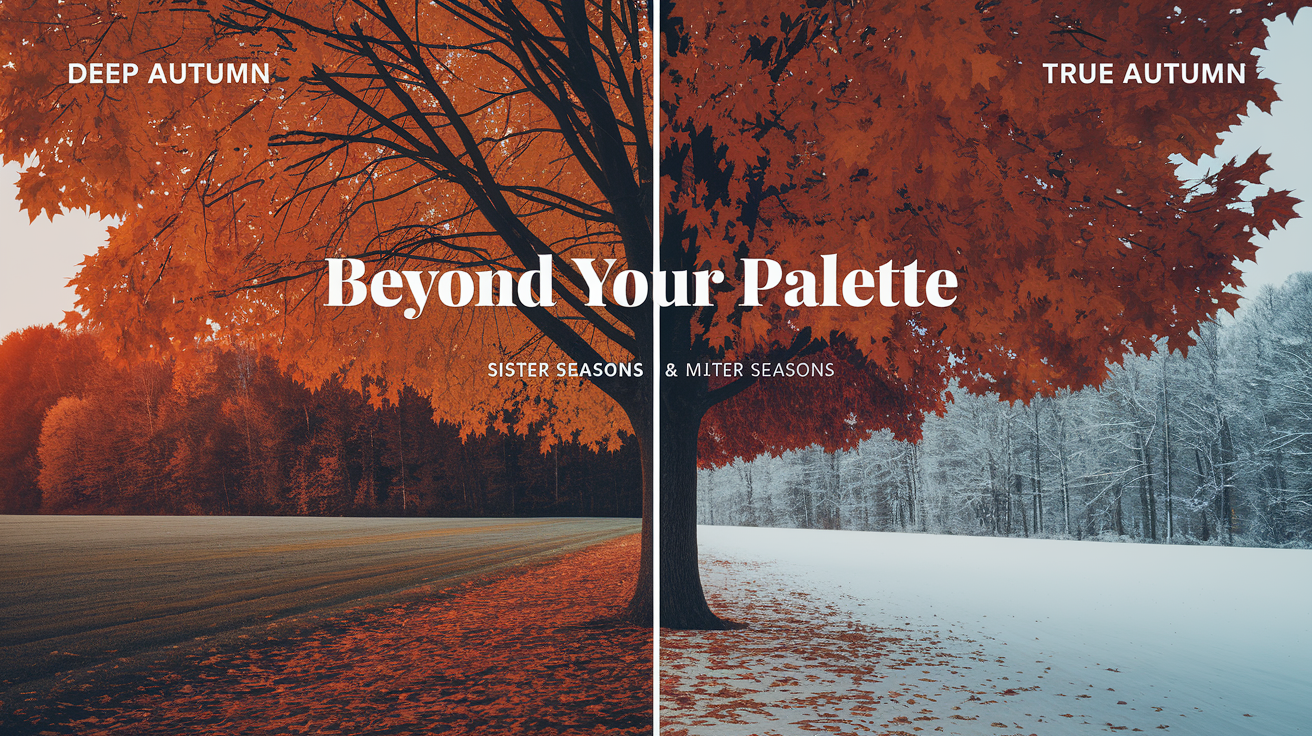
Deep autumn nests into the autumn family of rich, warm hues and grounded earthy brilliance. Understanding how deep autumn relates to its sister palettes–true autumn and dark winter–can unlock even more options for selecting dark autumn colors. This aids in planning a dark autumn wardrobe and ensures your picks complement your natural features, not against them.
True Autumn
True autumn colors are warm, subdued and medium in depth. Imagine colors such as pumpkin, moss or a gentle gold. These colors are low contrast, what we generally refer to as cozy or mellow, as opposed to the deeper, more dramatic tones of deep autumn.
Deep autumn shades like espresso, mahogany, and deep olive are a bit richer. Some true autumns might locate their best colors in the lighter edge of deep autumn's range, particularly when they desire additional punch. For instance, a true autumn might don camel or olive as her primary neutrals but 'borrow' a deep burgundy or forest green when she craves something bolder.
This cross-over can assist those who can't stay within one palette and feel lured by deeper shades. That's the primary distinction between the two – contrast. Deep autumn favors higher contrast looks, and true autumn flourishes in blends of near neighbors.
By mixing the two palettes, you can have fun with both dimension and subtlety. Combine a rust sweater with a moss scarf or experiment with mustard and espresso pants for an earthy, vibrant style.
Dark Winter
Dark winter is the opposite of deep autumn in that it leans cool. It has jewel-like, clean colors—imagine blackberry, deep teal, and charcoal. These colors have a freshness that deep autumn colors lack.
Deep autumn is warmer, with brown or gold undertones, whereas dark winter opts for icy, blue-based undertones. Although dark winter's colors are more vivid, they can work for deep autumners if selected cautiously. For instance, a deep autumn could inject a dark winter shade like aubergine, but anchor it with a warm neutral like olive or camel.
This averts the severity that ultra-cool shades can impart. For those with seasonal coloring shifts, or who color their hair, messing around with these shades can really help keep looks fresh. Mixing these palettes can generate daring contrasts, like combining deep autumn's rust with dark winter's navy.
This tactic allows you to dive deeper into styling variety while maintaining cohesion with your inherent undertones.
Building Your Wardrobe

A deep autumn color palette wardrobe builder honors your skin, shape, and lifestyle. We're talking about pieces that transition with you from weekdays to weekends. Opt for deep, natural tones and carefully-considered prints to maintain a cool-yet-functional aesthetic.
This focus on quality over quantity contributes to a sustainable wardrobe that doesn't age or become difficult to style.
Foundation Pieces
Begin with quality basics in olive, camel and dark brown. These neutrals knit with other deep autumn tones and ground any look. A well-fitted dark brown or olive blazer is a must.
Camel trench goes for work or play. Accentuate with a collection of knit sweaters and cardigans in deep earth tones, which layer effortlessly through transitional seasons.
Opt for timeless button-downs in rich, warm shades such as burnt orange or rust. Olive or deep chocolate slim-fit trousers, which work for most occasions. Ditch harsh black and white – they can conflict with deep autumn undertones.
Instead, go for warm, subdued colors on your staples. A capsule wardrobe mentality will allow you to mix and match effortlessly. Add at least one pair of dark denim jeans, a basic mustard or brick red midi dress and a few walnut or olive basic tee's.
Every article should complement the others, minimizing decision fatigue and maximizing confidence on a day-to-day basis.
Statement Items
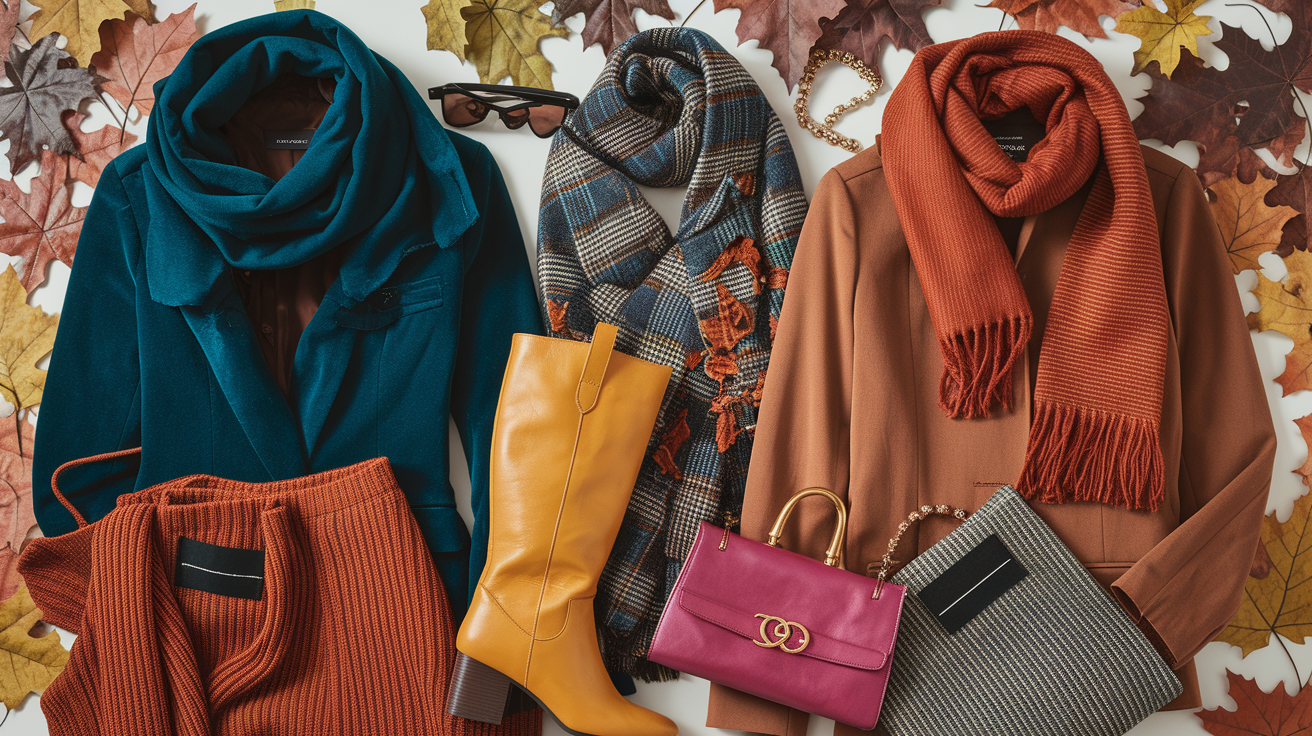
Choose some statement items to display the deep autumn palette. Think rust suede jacket or a mustard yellow scarf. These are the pieces that let you show off your personality and catch compliments.
Deep teal blouses or olive green boots can make for standouts without being too much. Offset these statement pieces with more basic neutrals. Wearing a printed skirt in fall colors with a camel sweater keeps it together.
Layering is key — pair a chunky knit sweater over a mustard dress, or toss a velvet olive blazer over a neutral base for texture and warmth. Statement pieces should feel unique, yet still blend in with the rest of your wardrobe.
Opt for items that can dress up a casual outfit or jazz up work wear, providing day-to-night versatility.
Patterns & Textures
Texture and pattern are your best friends in deep autumn wardrobes. Medium to large-scale prints in warm, earthy tones like olive, rust and mustard add interest without distraction.
Plaid, houndstooth or abstract leaf prints suit this color scheme. Rich fabrics like velvet, wool, or heavy knits play into the season's spirit and offer some coziness.
Combine patterns judiciously. Match a patterned scarf with a solid top or a print skirt with a neutral sweater. For visual consistency, keep to colours in your palette.
Establish a pattern go-to's—maybe geometric designs or traditional checks—that fit your style and the deep autumn vibe. Layering different textures, like a wool skirt with a soft knit, adds dimension.
Thoughtful color and pattern choices pull the wardrobe together and keep you looking sharp and confident.
Perfecting Your Look
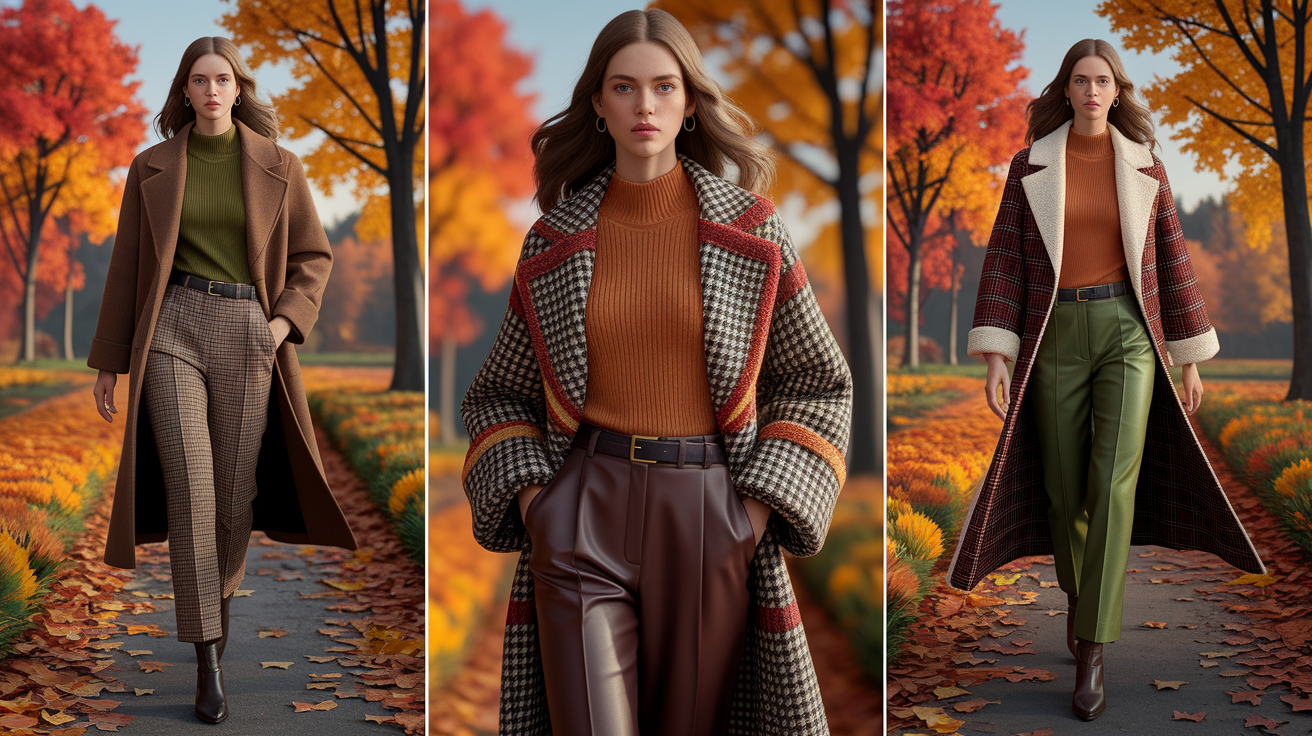
Perfecting your look with the deep autumn color palette isn't just about choosing the right clothes. It's more about creating a unified look in terms of your makeup, jewelry and accessories. The deep autumn palette, characterized by its rich, warm and earthy hues, is easily determined by seasonal color analysis which examines the tone of your skin, eyes and hair.
For deep autumns, darker shades with golden or olive undertones generally compliment your natural coloring. Evolving your style throughout the year—such as wearing lighter deep autumn colors, like rust or olive, in spring—ensures your look stays grounded as seasons change. Even subtle touches, such as selecting prints that have less than 10% exterior colors, or exchanging black for deep teal, brown, or espresso, can be impactful.
Makeup
Deep autumn makeup should emphasize warm, earthy colors that align with the dark autumn palette. Shades like copper, bronze, and rich browns enhance the warmth in your skin and eyes, making them truly pop. Copper, deep burgundy, and golden olive eyeshadows beautifully accentuate brown, hazel, or green eyes. These dark autumn colors mix harmoniously, providing depth and understated drama.
Lip colors are an excellent opportunity to showcase some autumnal richness. Key pieces like brick red, terracotta, and warm berry shades complement dark autumn individuals and their trademark hair and eye color, which is typically dark and warm.
Foundations and blushes should ideally feature golden or peachy undertones to suit dark autumn complexions, avoiding anything too pink or cool. Cool-toned makeup—icy blue, pale pink, or silver—clashes with the warm hues of deep autumn. Instead, opt for browns and golds in liner and mascara to create a cohesive dark autumn look!
Jewelry
Jewelry can either quietly or loudly reflect the deep autumn aesthetic. Warm metals like gold, copper, or bronze work well with the palette's deep undertones. Gemstones like amber, tiger's eye, garnet, and deep green jade lend depth.
Statement earrings or chunky necklaces in these materials dress up clothes without feeling overwhelming. You don't have to have a ton of options—picking specifics for your palette simplifies mix and match.
Your style counts. Select jewelry shapes and sizes that suit your style, however adhere to colors within your palette. Since you're building a petite, curated jewelry wardrobe, you'll always have options that tie your look together.
Accessories
Accessories bring texture and intrigue to deep autumn ensembles. Mustard, olive or rust scarves just seem to pull an outfit together and highlight the warmth of the skin and hair. Bags in deep teal or chocolate brown trade out classic black for an even more flattering effect.
Stacking hats, belts or bracelets makes for a chic look. Mixing leathers and metals, so long as they remain within the warm autumn palette, keeps things cohesive.
Build your accessory collection gradually. Concentrate on quality, versatile pieces in deep autumn neutrals and accent shades. This simplifies transitioning your outfit for the seasons or an occasion.
The Psychology of Deep Autumn
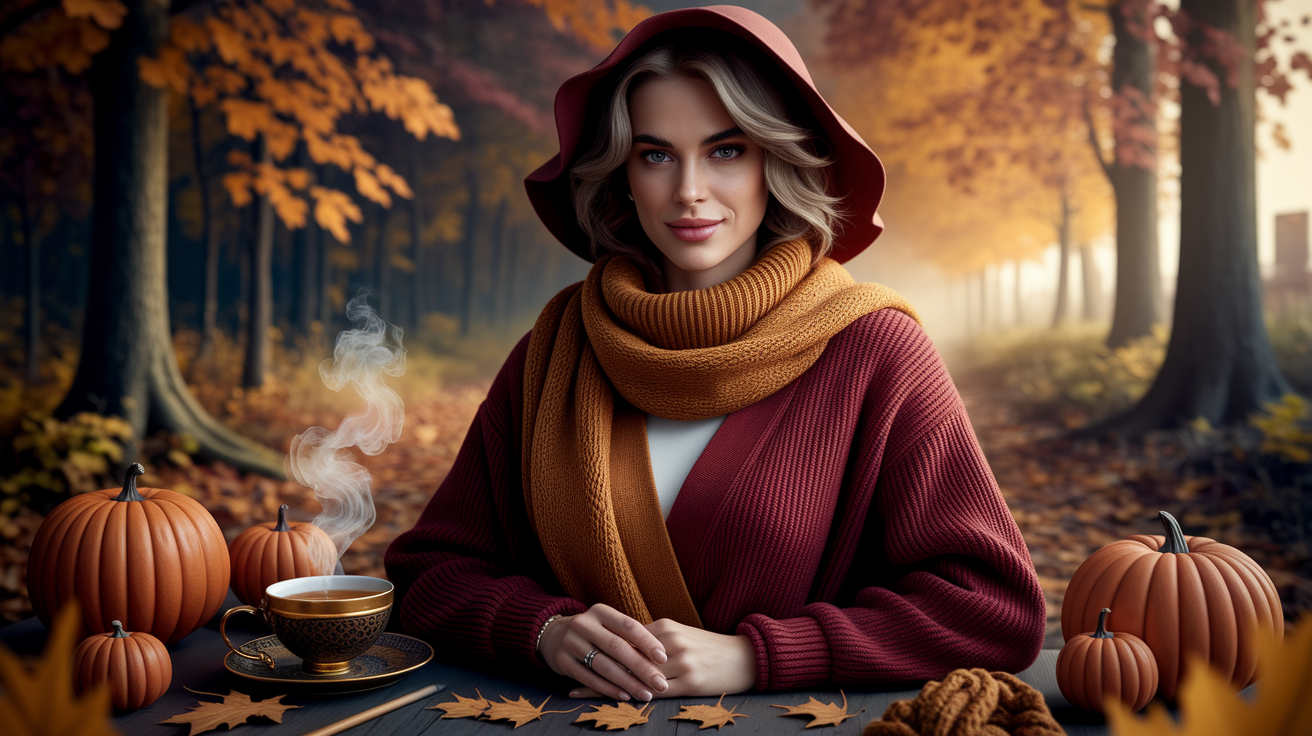
Deep autumn colors create a cozy feeling. The palette mixes fierce colors such as olive, rust, deep teal and mustard. These hues compliment the season's golden light and falling leaves. Their effect extends under the surface. The psychology of deep autumn impacts our emotions, our communications, and others' perceptions of us.
Selecting these hues for your apparel selection can shift your mindset, increase your self-assurance and assist you in displaying your character in understated ways.
Expressing Warmth
Deep autumn colors, particularly those in the dark autumn palette, serve you well when you want to communicate warmth and accessibility. Hues of burnt orange or deep gold resonate as comforting, nearly wistful — establishing a grounded, welcoming vibe. These are the shades that evoke thoughts of togetherness, dinners around the table, and fall strolls, making them essential for any dark autumn wardrobe.
Incorporating these dark autumn colors into your ensemble can assist you in appearing more inviting, which facilitates social exchanges. The comfort we feel from these hues is no coincidence—psychology associates warm, saturated colors with cozy, safe emotions. Dressing in these colors can put other people at ease in your presence, enhancing your dark autumn look.
Dressing in these colors can put other people at ease in your presence. When you look at a sweater in that deeply, almost cinnamon brown, your reflex is to believe and unwind. Color decisions, even minor ones, frame thoughts. If you want to encourage togetherness or spark dialogue, deep autumn's palette is a powerful weapon.
Projecting Strength
Deep autumn colors aren't just muted or subdued; they embody a unique vibrancy. Dark autumn hues like espresso, forest green, and aubergine indicate strength and stability, making them ideal for professional settings where presence and confidence count. Wearing a dark autumn wardrobe, such as a deep olive blazer or a dark rust scarf, helps you stand out without being gaudy.
Creating a signature dark autumn look that combines power with effortlessness is key to showcasing these colors effectively. Most individuals with warm skin tones and gold undertones feel most confident in these tones, as they harmonize beautifully with their natural coloring. This balance enhances self-perception, making you feel at ease in what you're wearing.
The dark autumn color palette allows you to toggle between warmth and intensity, adding versatility to your style. The palette's dark value and neutral chroma highlight the strength of your personal style, ensuring you always make a lasting impression.
Creating Intrigue
Deep autumn is great for igniting curiosity. The colors themselves are uncommon in mainstream fashion, so they catch the eye. Pairing odd couples—mustard with deep teal, or rust with dark navy—can yield surprising but balanced looks.
Textures count as well. Tweed, corduroy and soft knits in these tones give a richness to an outfit. Hugging deep autumn's intensity allows you to display innovation and uniqueness.
You can have fun mixing up layers and patterns and accessories in these shades. Sporting these colors outside of fall is a style choice, a point of distinction, a conversation starter.
Conclusion
To construct a style around the deep autumn palette, select lush, earthy tones such as olive, rust and deep teal. These colors play nicely with most warm undertoned skin complexions. Introduce texture with gentle wool or sleek suede. Put gold or copper for a classic, cozy punch in your style. Individuals tend to exude tranquility and power in such hues, aiding with confidence in the office and everyday life. Make a statement by mixing dark greens, bold oranges, and rich browns — in fresh combinations. Experiment with one new color combination or trade a cool shade for a warm one the next time you get dressed. Make your style effortless and authentic. Post your faves or seek advice in our group.
Frequently Asked Questions
What is the deep autumn color palette?
The dark autumn color palette is intense, warm, and earthy, featuring dark autumn colours like deep greens, warm browns, and burnt oranges. These shades beautifully complement the warm undertones and dark features typical of dark autumn individuals.
Who suits the deep autumn palette best?
Individuals with warm undertones, dark autumn hair, and deep eye colors thrive with the dark autumn palette, which enhances their natural coloring and adds a warm hue to their complexion.
Can I wear black if I'm a deep autumn?
Black is severe for dark autumn individuals. Deep browns, dark olive, or charcoal are better basic alternatives, as they correspond to the warmth of the dark autumn palette while remaining versatile.
How do I build a wardrobe with the deep autumn palette?
Choose items of clothing in deep, warm tones such as olive green, rust, and chocolate brown from the dark autumn palette. Layer with neutrals and throw in textured fabrics for dimension, building a harmonious dark autumn wardrobe.
Are there makeup tips for deep autumns?
Opt for warm make-up – think bronze shadows and terracotta lipsticks that enhance your dark autumn complexion. Earthy colors accentuate your natural beauty and complement the dark autumn color palette.
Can I mix deep autumn colors with other palettes?
True, but concentrate on keeping in the warm, rich spectrum of dark autumn colors. Mixing in too many cool or bright shades can disrupt deep autumn's natural affinity.
Why is color psychology important for deep autumn?
When you don dark autumn colors, you convey confidence and a grounded, stable personality. These warm hues are considered to be trustworthy, reassuring, and comforting, contributing to a good perception of your dark autumn complexion.